Alexander the Great and the logistic
| série: | Alexandre le Grand |
| éditeur: | California Press |
| auteur: | Engels Donald |
| classement: | biblio501 |
| année: | 1980 |
| format: | broché |
| état: | TBE |
| valeur: | 20 € |
| critère: | ** |
| remarques: | English book Alexander the Great and the logistics of the Macedonian army A) the expedition >> p 2 it is understood that supply is the basis of strategy and tactics >>p. 4 each of the routes followed by the Macedonians is the result of a conscious decision by Alexander to best fulfill his army's strategic and logistic objectives 1/ the Macedonian army and its logistic system - the number of followers to the army was considerable (one to 3 soldiers), average speed was about 15 miles a day - of utmost importance was the ratio between the system's carrying capability and its consumption rate of provisions - additionally to the comestible provisions were the non-comestibles supplies to be transported by man or by pack animal - a Roman legion for exemple would need about 800 pack animals for the transport of non-comestible supplies and these animals would need to be feeded - an adult on Alexander's expedition would need 3 lb of grain and 2 qt of water per day 1 lb = 0,5 kg, 1 qt = 1 litre, 1 gal = 4 litres - a horse in comparison would need 10 lb chaff (= foin) and 8 gal. of water per day - about 1500 pack animals would be needed to carry comestible supplies during a travel of maximum 7 days (when crossing a desert 8000 pack animals would be needed for 2 days!) n.b. these figures concerning an army of 45'000 incl. cavalry and civilians) >> p. 22 the special logistic system organised by Philipp II for his army, the consequence of these reforms was to make the Macedonian army the fastest, lightest and most mobile force in existence capable of making lightning strikes against opponents before anyone had time to fear the event and this organization was retained by Alexander n.b. Philipp's logistic system did not make use of any carts (too slow and too inflexible) >> p. 23 Alexander's soldiers were much like Marius mules n.b. every Roman legion had a baggage train of 500–550 mules or about 1 mule for every 10 legionaries, to keep these baggage trains from becoming too large, Marius had each man carry as much of his own equipment as he could, including his own armor, weapons and 15 days' rations (about 23-27kg) of load total - a soldier needs about 3600 calories a day + 70 g of protein - the main food of the Macedonian soldier would be grain (baked or mixed with liquid as a kind of porridge) and grain (mostly dried) could be well stored (in all kinds of climate) and was easy to carry 2/ Greece and Turkey >> p. 26 sea and river transport in antiquity were always much more efficient than land transport since a large merchant ship could carry about 400 tons while a pack horse or mule could only carry 200 lb and would consum 20 lb of foodstuffs daily while travelling - the march of the army to the Hellespont took 20 days incl. two days for resting >> p. 32 the Persian fleet had 200 men per vessel und 400 vessels, it would therefore consume 120 tons of grain alone per day - during his march in Turkey, Alexander followed the coastal route where supply was sufficiently available from the various cities >> p. 35 Parmenion, in addition to his other duties, may have been given general supervision of the baggage train and in this connection, he was given the responsability of transporting 7290 tons of treasure stored at Persepolis, Susa and Pasargadae to Ecbatana on 20'000 mules and 5000 camels, a task which implied considerable skill, experience and knowledge of logistic organization - when marching on the Anatolian plateau, it would have been impossible for the army to retreat over the same route by which they advanced since they had eaten all the crops along the way - the army was a moving city and had to consume 10'000 gallons of water each day! (40'000 liters = about 1,3 liter per man incl. civil) - however Alexander had often advance depots along his line of march - the crossing of the Cilician Gates, abandoned by the Persians, was one of the greatest strokes of luck for Alexander 3/ Syria, Lebanon, Israël, Egypt and Iraq - the crossing of the Sinaï desert was a most difficult task for the logistics and supply was mostly brought by the fleet >> p. 61 the expedition to Siwah from Paraetonium (now Mersa Matruh) took 8 days for 160 miles with a light armed force of 5000 soldiers and for the first time using camels as baggage train - on the way to Babylone, Alexander's army could partly use river transport (probably on the Tigris) as before the battle of Gaugamela, the Persians did not succeed in preventing the Macedonian army to cross the Tigris >> map 8 the route of the army through Mesopotamia 4/ Iran and Afghanistan >> p. 71 after a stay of 34 days, the Macedonians left Babylon for a 20-day journey to Susa, in that region (Persian heartland), Alexander was no longer considered as a liberator and had often to face fierce resistance >> p. 71 indeed, he generally managed to receive advance intelligence throughout his campaigns on enemy's movements and resources of the country - then occurred an extraordinary series of marches in pursuit of Darius, arriving in Hyrcania, the Macedonians were impressed by the famous Hyrcanian forests (somehow junglelike) where a famous Caspian honey as mentioned by Curtius was to be found >> p. 84 and in fact it is difficult not to be impressed by Curtius' remarkable geographical knowledge of Alexander's route 5/ Uzbekistan, Tadzhikistan, Turkmenistan, Pakistan and Southern Iran >> p. 99 leaving the city of Bactra for the Oxus, the Macedonians were about to enter a different world which even now is imperfectly understood - and the war in Sogdia had to be conducted much more differently as before >> p. 107 afterwards Alexander now proceeded east down the Kabul river west side of the Indus, he met there severe obstacles against the Indian tribes but no supply difficulties were encountered and river transport could often be effected, - when retreating from the Hyphasis river, Alexander's army sailed down the Indus >> p. 110 analysis of the route through the Gedrosian desert and the main reason for this adventure was to establish colonies along the coast >> p. 11 Craterus and Hephaestion returned with the main part of the army including the elephants to Kandahar and Zarangaea through Arachosia n.b. each of the 200 elephants taken with them required 500 lb grain and 60 gallons water each day and were definitively not able to cross the Gedrosian desert - the crossing of this desert turned to be a disaster despite the fact that supply preparations were duly planned but because Alexander's army had to face serious adverse monsoon winds and above all the coordination with Nearchus' fleet did not work out well - after this passage no serious difficulties affected Alexander's further operations but he fell ill and deceased shortly after Conclusion - the major problem in attempting to understand the logistic system of the Macedonian army is not only the almost complete lack of interest by other sources in its functioning but also the fact that Alexander so capably directed its operation that logistics scarcely seems to have affected any of his strategic decisions, however supply was the basis of Alexander's strategy - the terrain of the Persian empire was in a real sense the Persian king's most formidable weapon, its extensive deserts, salt wastelands, barren, impenetrable mountain ranges, rivers of salt water, severe climatic extremes and the often vast distances between cultivated and inhabited regions were immense obstacles to any invaded army and these factors were largely responsible for the failures of Crassus, Antony and Julian B/ details of - Appendix 1 about the rations by man and pack animal - appendix 2, the site of Pinarus (battle of Issus) - appendix 3 approximate chronology of the Gedrosian campaign - appendix 4 Alexander's route in the Gedrosian desert, possible routes taken as mentioned by the ancient authors and as proposed by the modern authors sir Aurel Stein and Hermann Strasburger - appendix 5, statistical tables about supply for one day, troop numbers at different locations, Alexander's march rates and Bematists' measurements - Maps 1 to 16 (sometimes not always clearly descreibed, lack of location names - bibliography of ancient and modern sources >>> a volume looking not so much at what Alexander did but at how he went about it dealing mostly with questions of supply, not always easy for the lecture but grateful for what Engels has done, no illustrations but a lot of details, maps, special notes, etc enclosures - cover of the book - the routes of Alexander the Great - Alexander and Aristotle - the siege of Tyr - a huge merchant ship Information - Quintus Curtius Rufus was a Roman historian, probably of the 1st century, author of his only known and only surviving work, Historiae Alexandri Magni, "Histories of Alexander the Great" or more fully Historiarum Alexandri Magni Macedonis Libri Qui Supersunt; all the books that survive of the Histories of Alexander the Great of Macedon much of it is missing, apart from his name on the manuscripts, nothing else certain is known of him, this fact alone has led philologists to believe that he had another historical identity, to which, due to the accidents of time, the link has been broken, a few theories exist, they are treated with varying degrees of credibility by various authors, meanwhile, the identity of Quintus Curtius Rufus, historian, is maintained separately; - in what remains of his work, Curtius mainly does not identify sources, they were, perhaps, stated in the missing books, speculations of what they were based on thorough analysis of the content and style vary widely, Yardley and Heckel say: "the internal evidence for Curtius' sources is disappointing" he does, however, mention Cleitarchus, a historian in camp, twice, Ptolemy once, and Timagenes once, these men were participants in the Alexander story and therefore are counted as eyewitnesses, or primary sources, all accounts based on them are by analogy also termed "primary these works are also called "the Vulgate" |
| couvertures: | 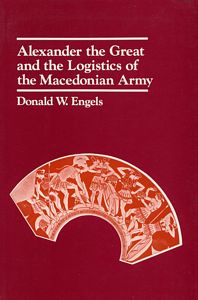 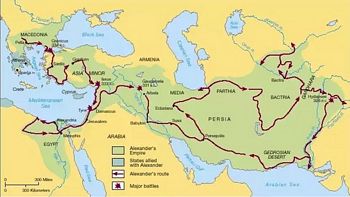 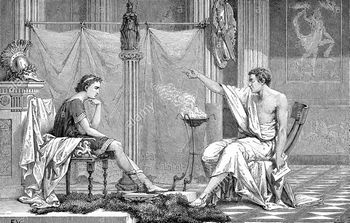 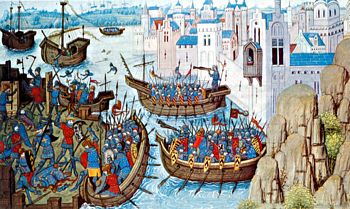 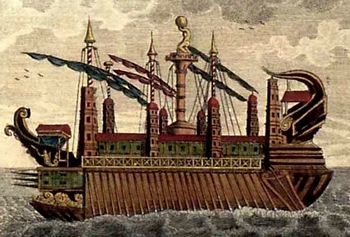 |
Copyright 2008 - 2025 G. Rudolf
